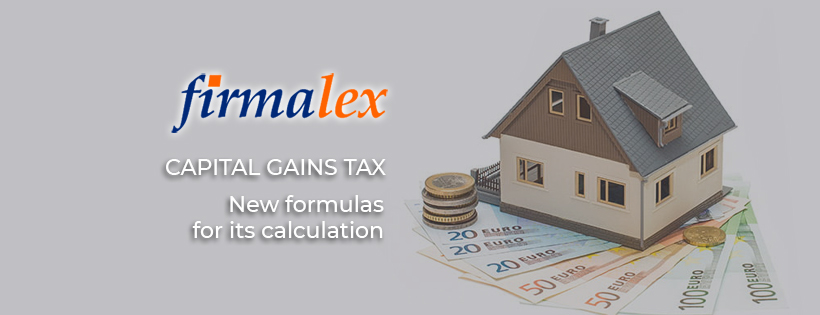Last November, the Council of Ministers approved a Royal Decree-Law that amends the calculation of the municipal capital gains tax to bring it into line with the Constitutional Court ruling that declared the tax illegal on 26 October.
The regulation adjusts the tax to the ups and downs of the real estate market, so that capital gains tax is only payable if a profit is made on the sale or transfer of a property.
Those who sell a house at a loss will be exempt from paying it from 10 November. This measure is not retroactive.
Two possible formulas for capital gains tax
The Royal Decree-Law provides two alternatives for calculating the tax:
– The objective formula: In this case, the cadastral value of the property is multiplied by new coefficients. New coefficients are approved every year, for example, to be included in the General State Budget Law, and evolve according to the evolution of the real estate market. This is an optional method, as the taxpayer has the option to pay the tax based on the actual increase in value achieved at the time of the transfer of the property.
– The actual formula: It is a calculation of the difference between the sale or transfer price and the purchase or acquisition price of the property. If the taxpayer proves that the actual capital gain is lower than that resulting from the objective valuation method, the actual capital gain can be applied.
The taxpayer can choose between these two models, depending on which is more favourable to him. It should be recalled that this tax is levied on the cadastral value of the land of the property, not on the structure.
Another innovation is that capital gains realised in less than one year are taxed between the date of acquisition and the date of disposal.
This Royal Decree-Law, which amends the revised text of the Ley Reguladora de las Haciendas Locales, came into force with its publication in the BOE (Tuesday 9 November) and local councils have six months to adapt it to their legal framework.
In 2019, Spanish local councils will collect €2.5 billion from this tax, and the government has stated that they will not have to reduce their services as they can continue to offer them to citizens.
The Royal Decree-Law establishes that the tax base is the result of multiplying the cadastral value of the land at the time of its creation by the coefficients approved by the municipal councils, which in no case may exceed the coefficients established by the government according to the number of years that have elapsed since the acquisition of the land.
In addition, the municipalities are given the option of adjusting the land registry values downwards by up to 15%, depending on the degree of updating, solely for the purposes of this tax. This ensures that the tax is adjusted to the real estate situation in each municipality.
Solve your doubts
✅ Our staff speaks perfectly Spanish, Valencian, English and German with what will be able to communicate with us in your own language and thus clearly resolve your queries.
📍 Denia – Plaza del Convento, 6 – Mezzanine floor door B
📍 Valencia – Calle Creu Roja, 1 – Block 6, Floor 1, door 10 (* only by appointment)
✉📞 Contact: info@firmalex.com – Tel. +34 966 421 416 – Whatsapp +34 622 497 615



